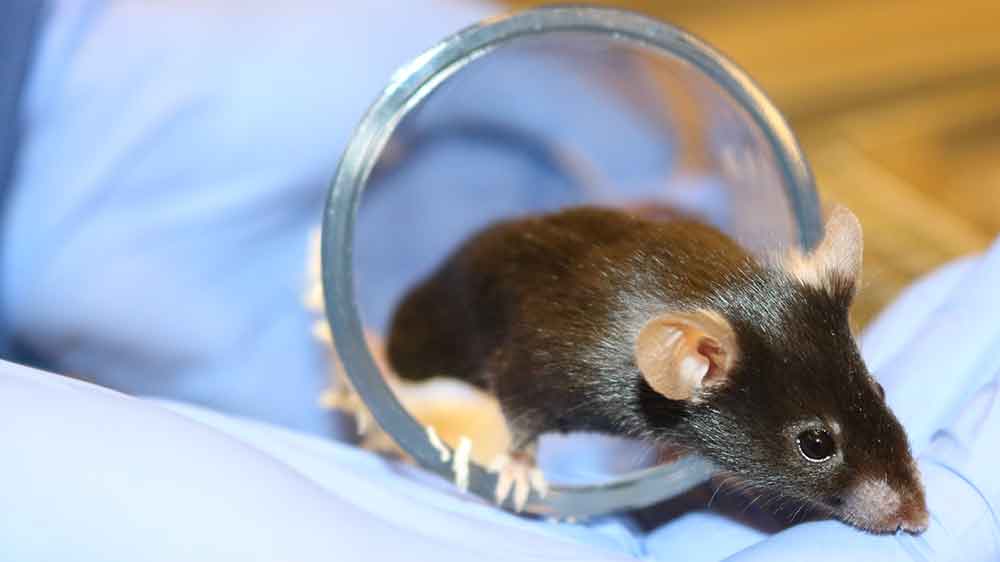The Thing with Mice

Just like humans, male and female lab animals have different bodies and physiological reactions. Female mice are more pain-sensitive and generally less muscular, but have stronger immune systems than their male counterparts. A few years ago, British researcher Natasha Karp compared 234 physical characteristics of male and female lab mice. She identified significant sex-based differences in more than half of those phenotypes. At the genetic level, as many as two-thirds of all genetically modified animals display differences between males and females. Despite this, depending on field the bias has been markedly in favor of using male animals, at least in the past. According to an oft-quoted US study, as recently as 10 years ago fundamental neuroscience researchers were still using mainly males in four out of five studies. It is an imbalance that can lead to gender-related interactions and risks being overlooked at the pre-clinical stage.

Factoring gender medicine into animal-based studies is a step towards precision medicine in humans.
The thinking has since changed. “We have determined a balance between male and female experimental animals across all research groups at UZH,” asserts Thorsten Buch, professor of laboratory animal science and director of the institute of the same name at UZH. In some disciplines, there may still be cases in which one or the other sex is favored without any objective reason, but these are the exceptions. “These days, all scientists are clear that they must examine both sexes when working with animal-based models,” Buch continues. Ideally, study coordinators would first analyze a small mixed group of male and female animals to look for gender-specific differences. If they exist, they can then be explored in further studies. “Both ethical and financial reasons back this approach,” explains Buch. If research were to focus on only a single sex, half of their offspring would have to be destroyed, he says.
Confusing physical characteristics
According to Thorsten Buch, one of the greatest challenges in both pre-clinical and clinical research is to distinguish between normal variability within a population, and relevant, sex-specific differences. As an illustration, he offers a comparison of heights in humans. On average, women in Switzerland are 165.5 centimeters tall, men 177.5. According to this average, women are smaller. Of course, there are also many women who are taller than men, and therefore display a common male characteristic. “So when an effect or characteristic in one sex differs from that in the other sex, the question is whether that difference is medically significant and clinically implementable,” Buch says.
That is because physical characteristics, and biochemical reactions, vary within each sex within a standard distribution, or bell curve. There is a significant overlap in the distribution of heights among men and women, for example. The same is naturally true of experimental animals, which is why assessing the relevance of those measured differences for both sexes is a major issue. Mean values are often used as an aid here, but these averages are of little help in individual cases, as the height example shows.
The fear that their hormonal cycle could make the data from female mice more variable and the analysis then more “difficult” is one of the reasons that studies in the past have been more skewed towards male mice. Mice have a reproductive cycle of four to five days. It has been studied extensively, with the surprising outcome that biomarkers in female animals are no more widely distributed than those of males. “Unexpectedly, it was found that variability among female animals is generally lower than that among male laboratory animals,” says Buch. There is therefore no reason to exclude female mice on the grounds of their hormonal cycle. In fact, including both sexes increases the validity of study findings. It also means that trials can include all of the animals born in the lab.
We have a balance between male and female experimental animals across all research groups at UZH.
Yet the sex of the experimental animals is not the only relevant thing when conducting experiments. So too is that of the study coordinator. Mice can smell when the coordinator is male, and adapt their behavior. That is something US researchers noted when conducting tests, including swimming. The mice stayed in the water longer when the studies were being conducted by men. The sex of the study coordinator evidently triggered reactions that affected stamina. It is not a test that UZH does, but the example indicates an interesting interaction between experimental animals and those studying them. Where psychological parameters such as fear, stress or pain reactions are explored, sex can very much be a factor.
How genes work
“Animals are individuals and differ from each other,” Thorsten Buch explains. He is interested in how response patterns vary between groups of same-sex and mixed-sex lab animals. Where relevant differences are found, the task is always to identify the mechanisms behind them. Animal-based research is, of course, intended to understand more fully the way a substance or gene works. It should help us comprehend the human body in more detail – and allow us to develop targeted active drug agents that best suit the individual needs of the patient.
This article is part of the dossier on gender medicine from UZH Magazine 1/24.